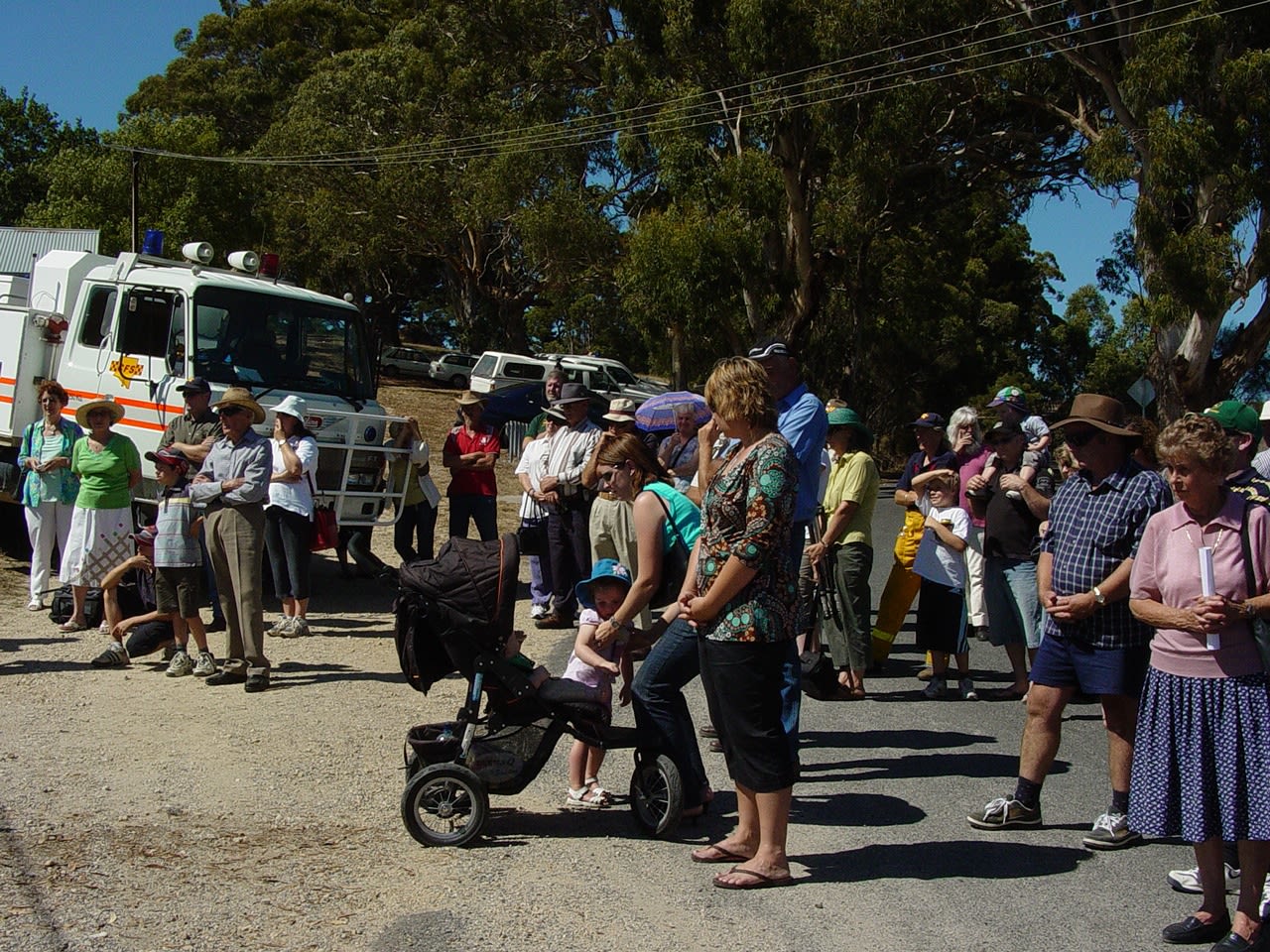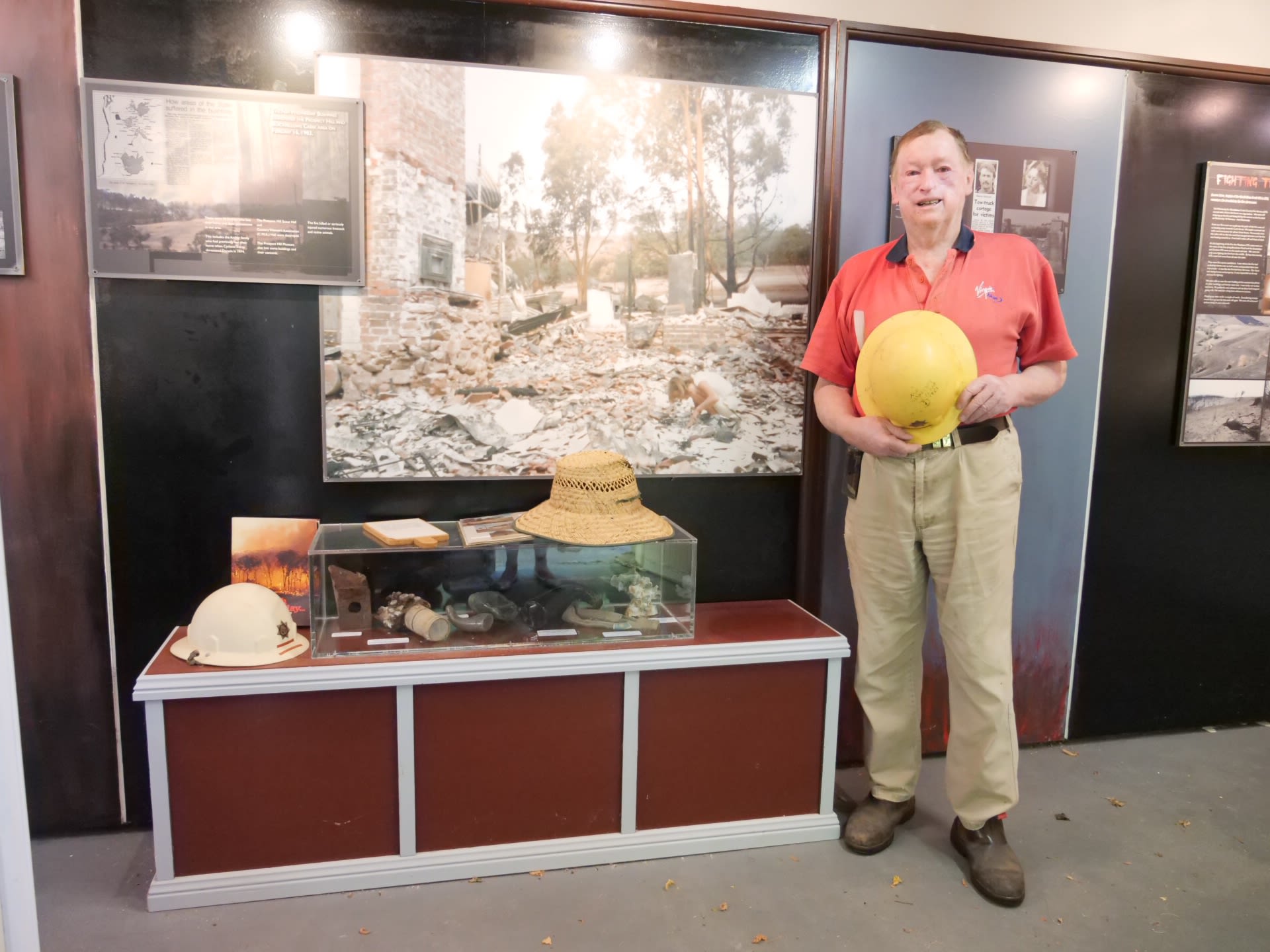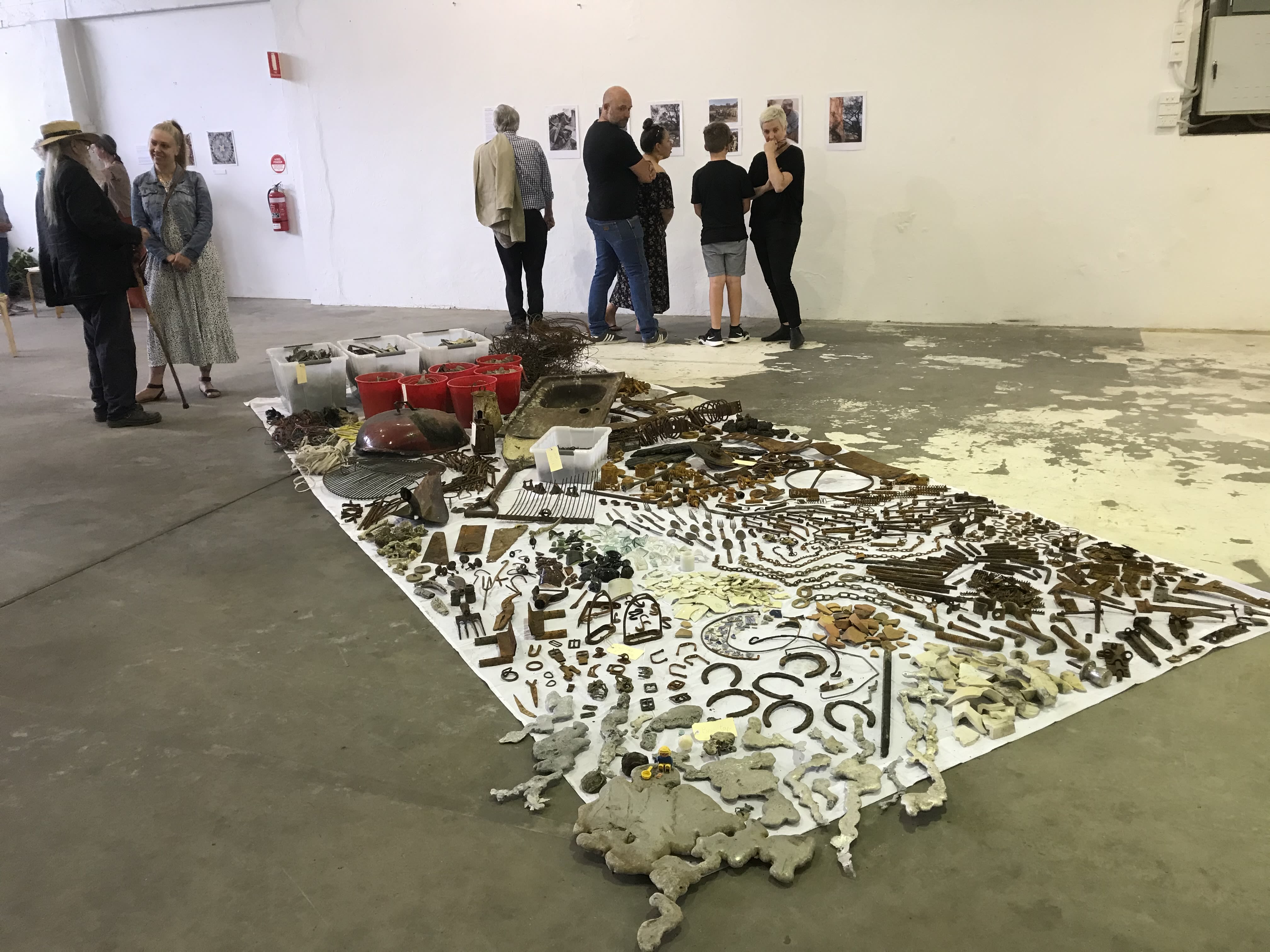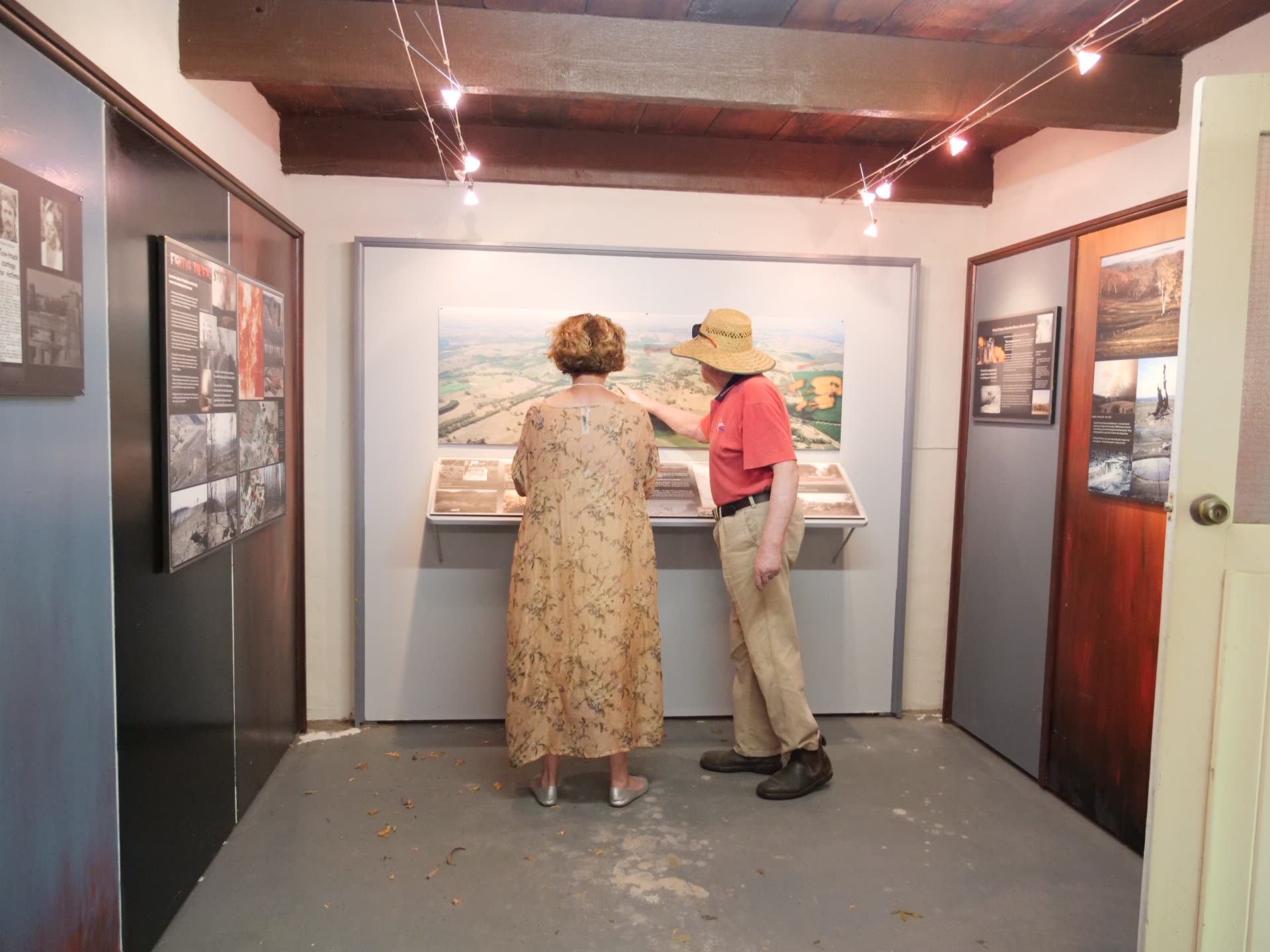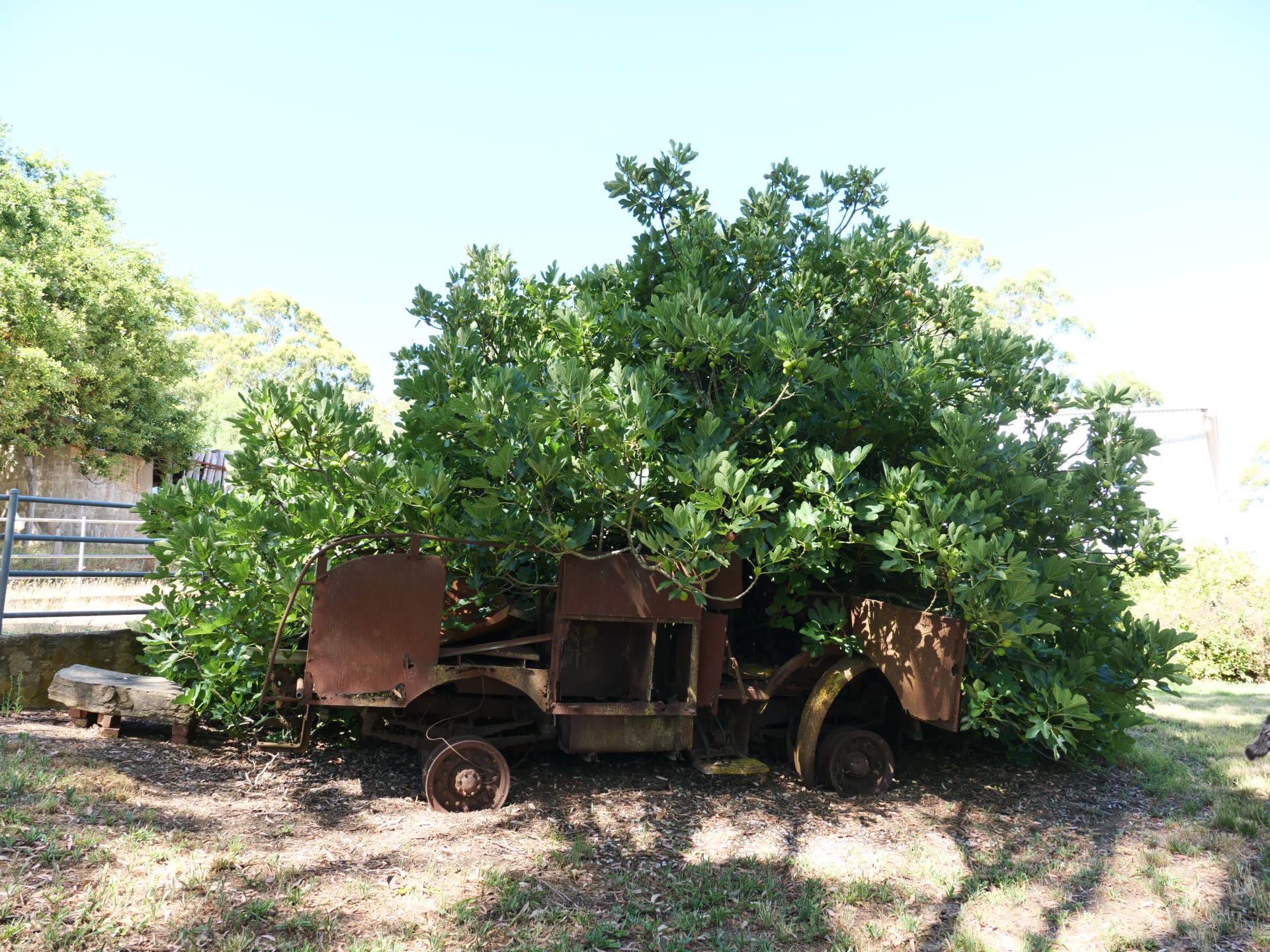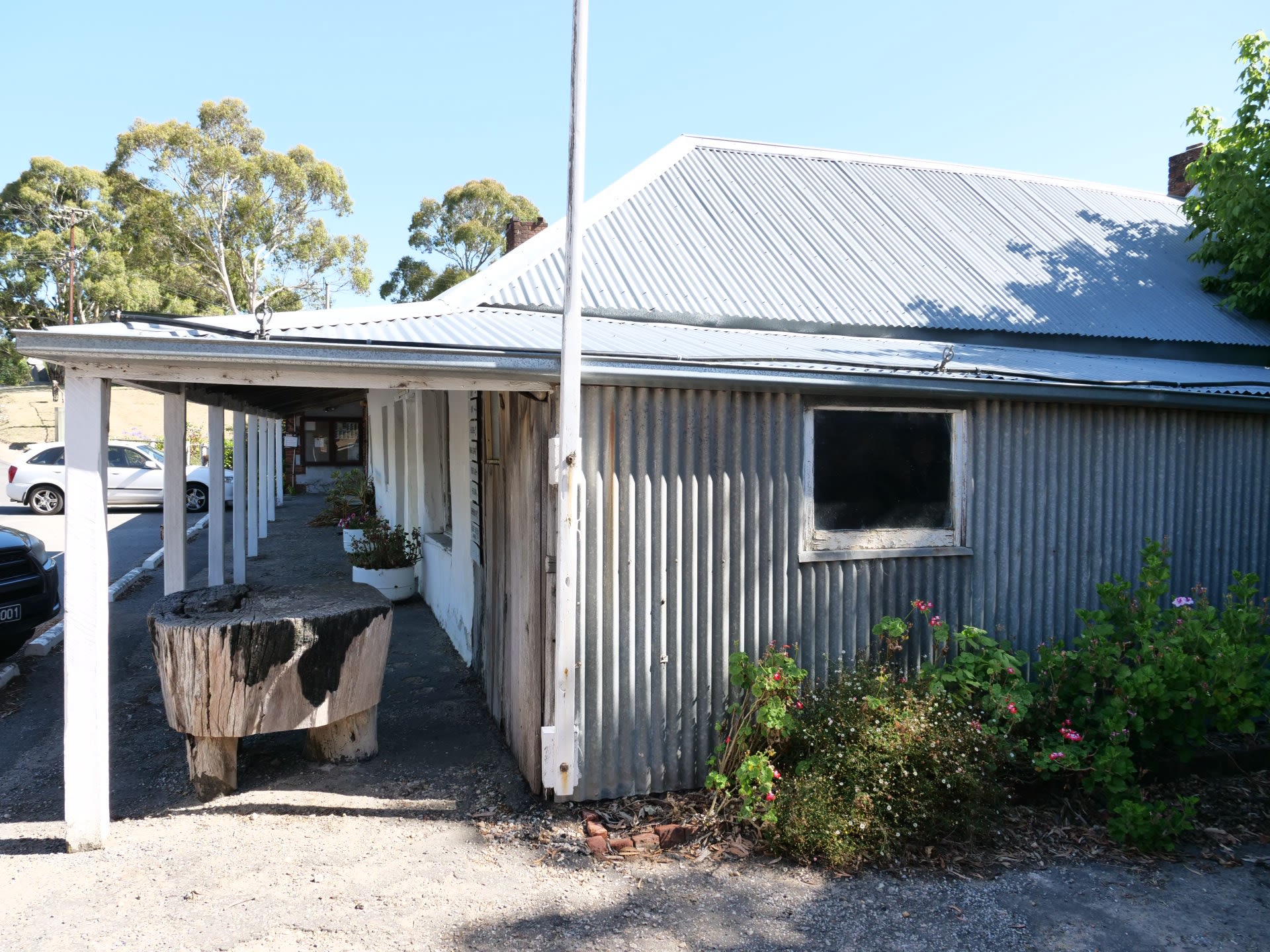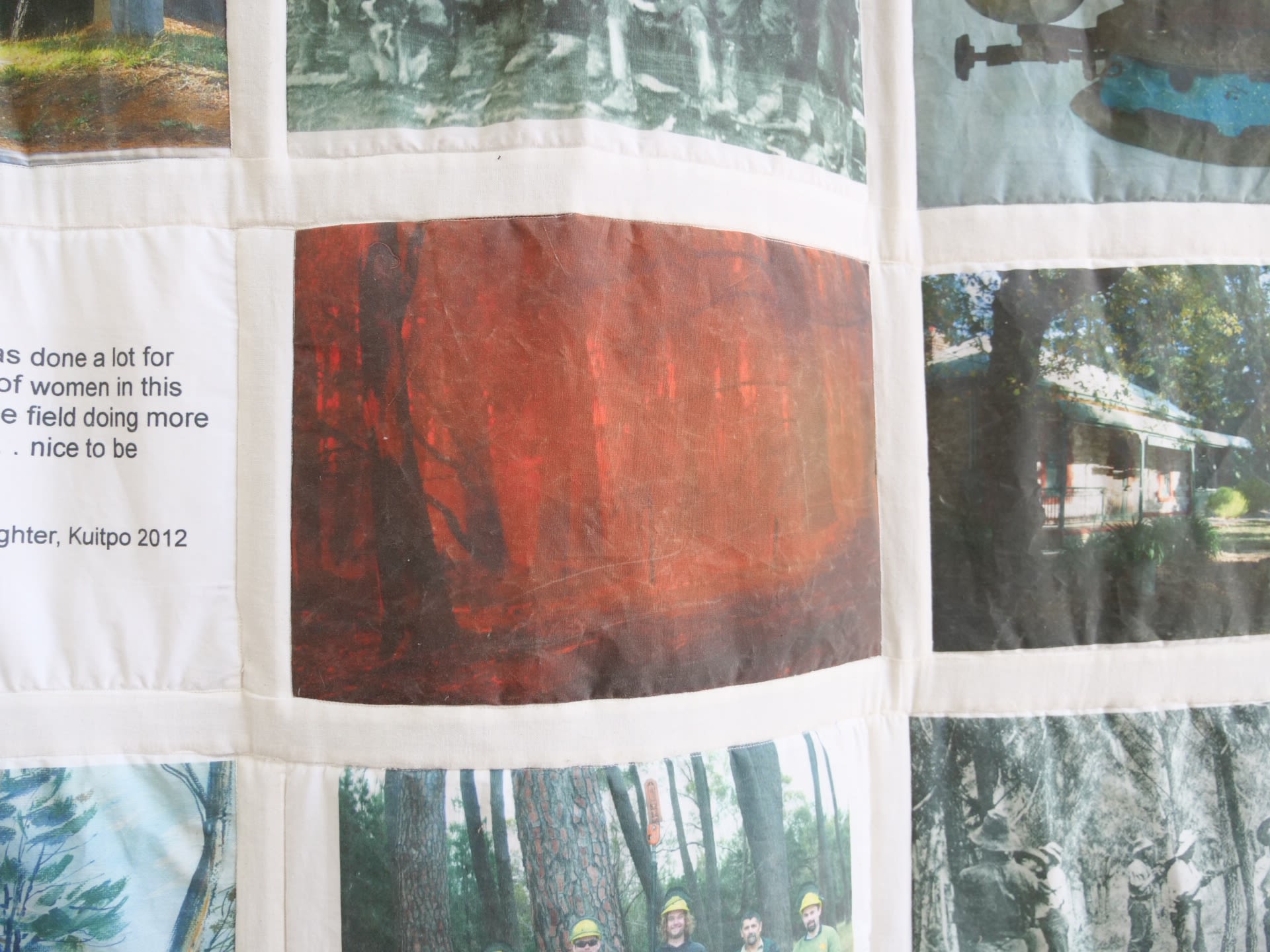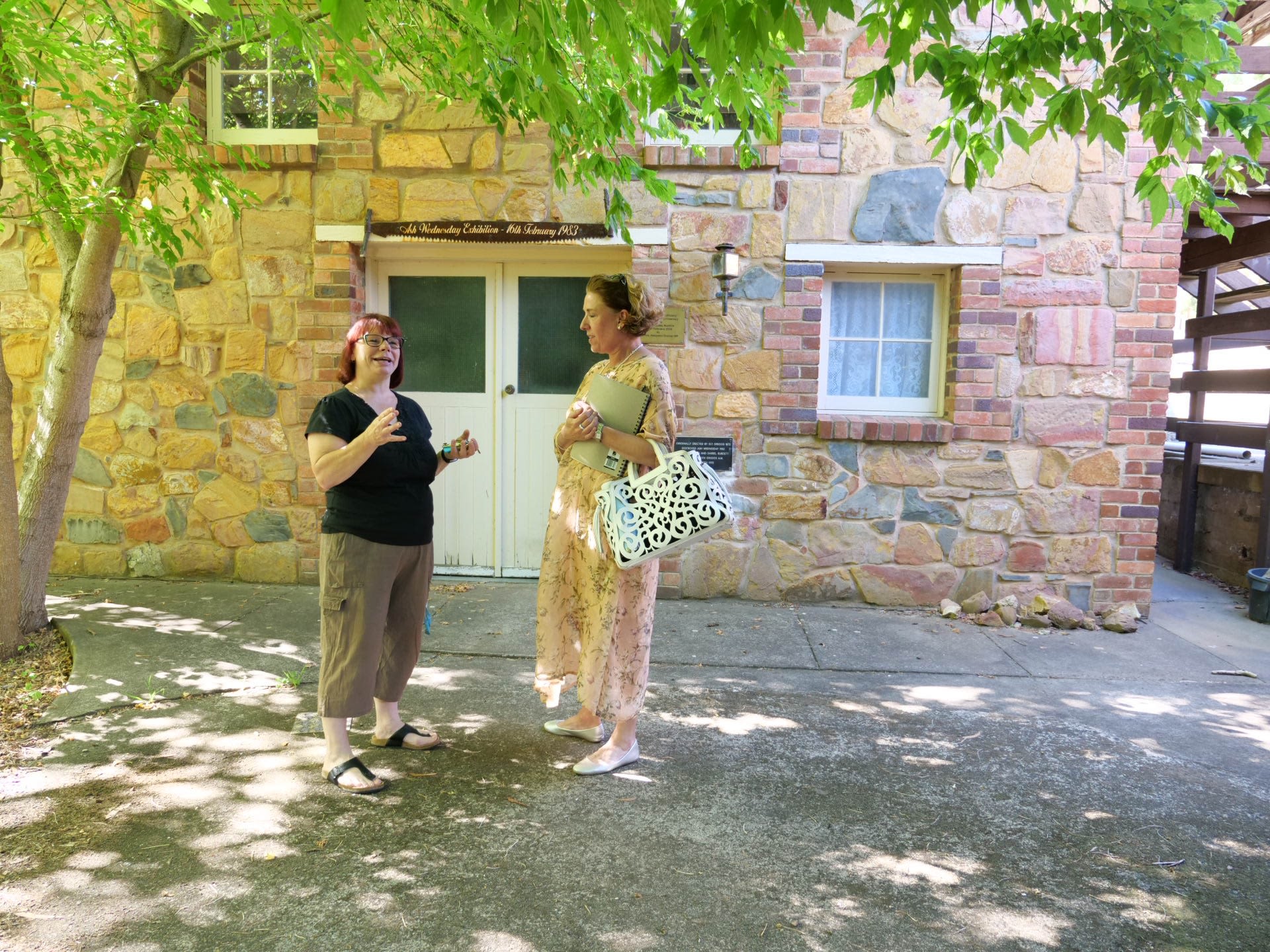40 years on
Remembering the 1983 Ash Wednesday fires and their legacy.
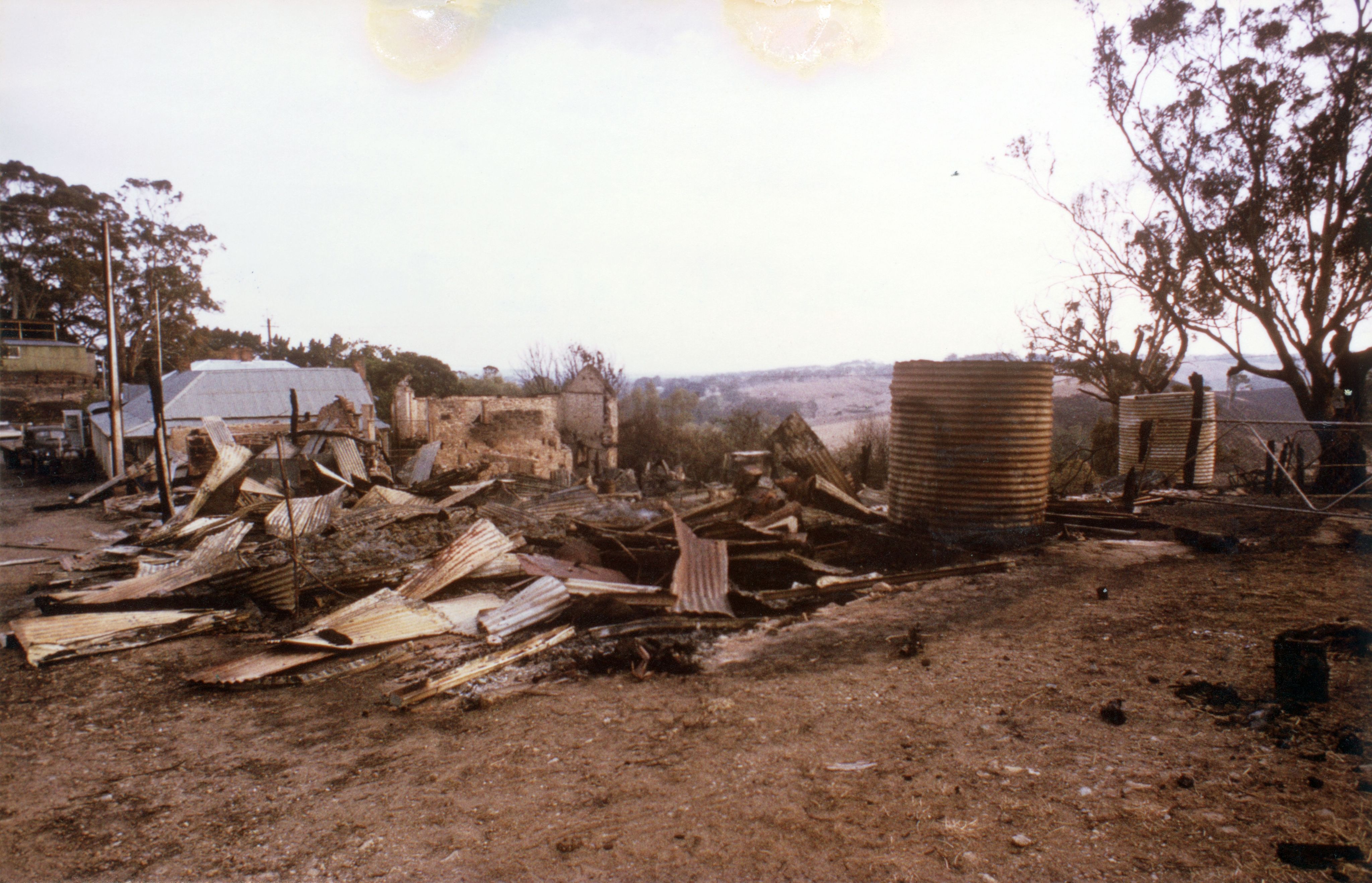
I think Prospect Hill’s built heritage and heritage stories helped residents to recover from the bushfires. Our little bushfire display that’s there in the museum: it’s helping people. Because when we did that display … we all vented our feelings. We thought they were all buried and gone. But we vented them again. Glenys Usher, Prospect Hill: Memories of a Burned Village.
Guests at the opening of the Prospect Hill Historical Museum Ash Wednesday exhibition, 2008. Photo from the History Trust of South Australia.
Guests at the opening of the Prospect Hill Historical Museum Ash Wednesday exhibition, 2008. Photo from the History Trust of South Australia.
Firestorm
The severe drought over eastern Australia in 1982 led to tinder dry conditions throughout the grasslands and forests of southeastern Australia. On 16 February 1983, near-gale force northerly winds, and temperatures well over 40°C drove huge fires (many started by arsonists) across Victoria and southeastern South Australia (Figure 16). Seventy-five people died (47 in Victoria, 28 in South Australia), and nearly 2,500 houses were destroyed. The worst affected areas were Victoria's Dandenong Ranges and the Macedon area, and South Australia's Mt Lofty Ranges, all scenic areas with considerable residential populations. Forests in southeastern South Australia and Victoria's Otway Ranges were incinerated. Most deaths occurred in the hour following the cool change, when strong, gusty westerly winds turned long, narrow corridors of flame into wide fronts. The enquiry that followed led to many changes in fire weather briefing procedures, most notably the provision for regular updates on the progress of wind changes. --- Federation and Meteorology
For Lindsay Gibson the 16 February started in Prospect Hill, 51 kilometres south of Adelaide. Up in the Hills the locals knew the conditions were treacherous. Some kept their children home from school. Others headed into town to work or to do chores.
That morning Lindsay let a neighbour move their dairy cows onto his property; he had green grass that would, in the event of fire, keep the animals safe. Then he headed into town to see the dentist.
Late morning, at a property on McLaren Flat the wind was strong enough to sway the overhead electrical wires. They made contact, and they arced. That fire was reported at 11.30am, it was the first fire of the day reported and within hours hundreds or reports were coming in from both South Australia and Victoria.
As the fires spread men in Adelaide received frantic calls from their families up in the Adelaide Hills asking them to come home and fight the fire, as was the convention then. By 3pm fires across both states were extreme. With gale force of between 90 and 100 km/h the fires were moving; spreading. What had seemed containable, was no longer.
Years later, remembering the day of the fire in Prospect Hill, Joyce Smart would recount her harrowing race to save her livestock. She managed through the smoke and noise to call her herd to her and to keep them safe at one spot on the property:
The flames were about eight foot high, just going across this paddock. I got in there…I called [the cows] and they started running down this hill where the flames were – running through the flames to me...they were holding their heads right up in the air…trying to – [keep] out of the flames…
Lindsay’s property abuts the Prospect Hill Historical Museum. Both properties are at the centre of the little town, as even today the local post office shares space with the Museum. The Museum proper is a legacy project begun by Mr. Keith John Griggs, the last member of the Griggs family to live on the property and the person who started the museum.
When Lindsay heard word of the fires, he drove back up the hill. After checking his property, he headed over to the Museum where he saw smoke coming out from under the roof space. Seeing it was on fire, he flagged down a CFS fire truck coming up the hill towards the Museum. Captain of the Blackfellow's Creek Brigade, Graeme Usher, was able to climb into the crawl space in the roof, drag up the water and in so doing save the building.
Across the Hills others were less lucky as homes were lost. In Prospect Hill the community lost homes, lives, and cherished community spaces, including the library and the CWA hall. Sadly the CWA Hall would not be rebuilt.
Site of the former CWA Hall, 1983. Photo from the Coad family album, Prospect Hill Historical Museum collection, courtesy of the Coad family.
Site of the former CWA Hall, 1983. Photo from the Coad family album, Prospect Hill Historical Museum collection, courtesy of the Coad family.
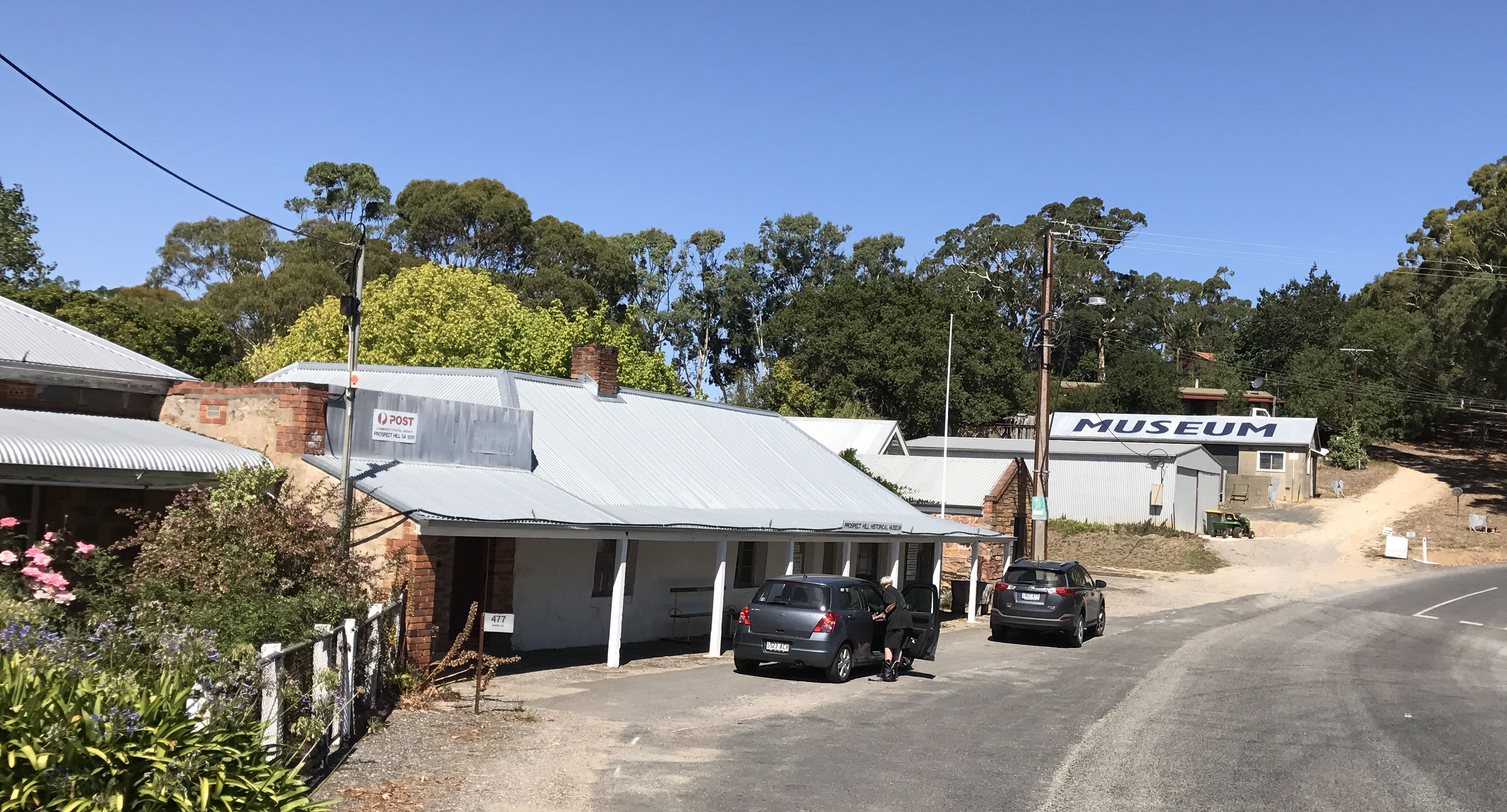
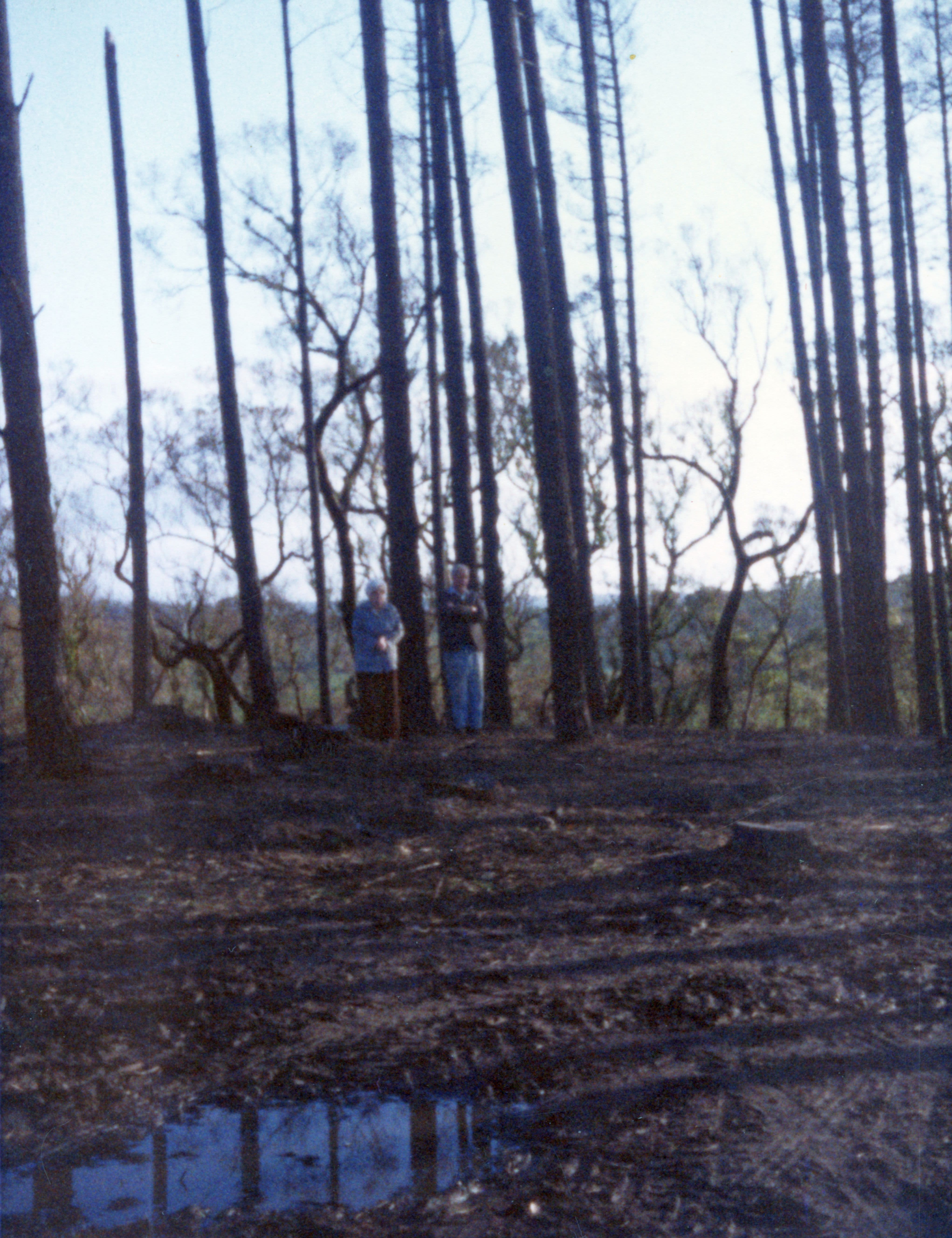
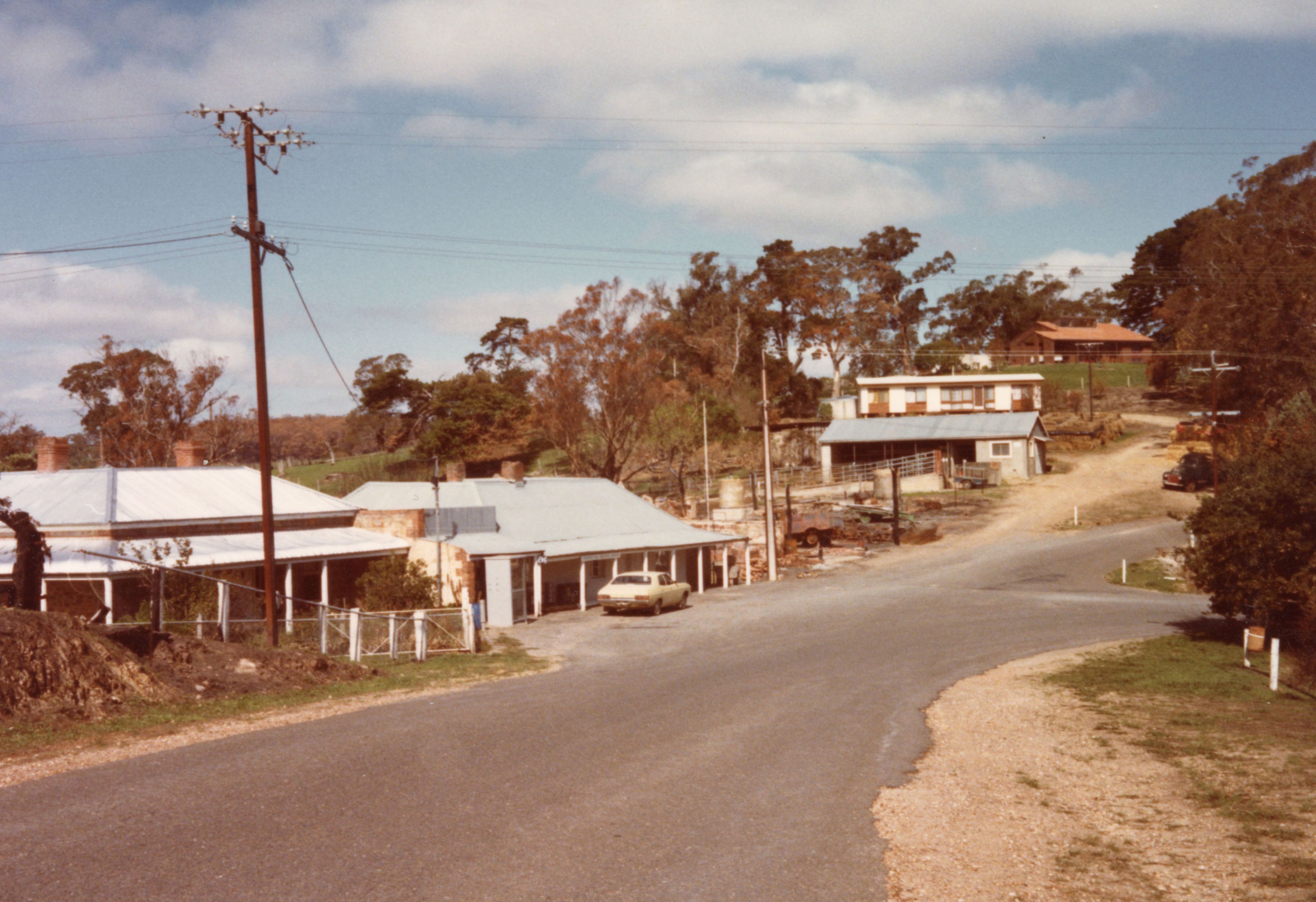
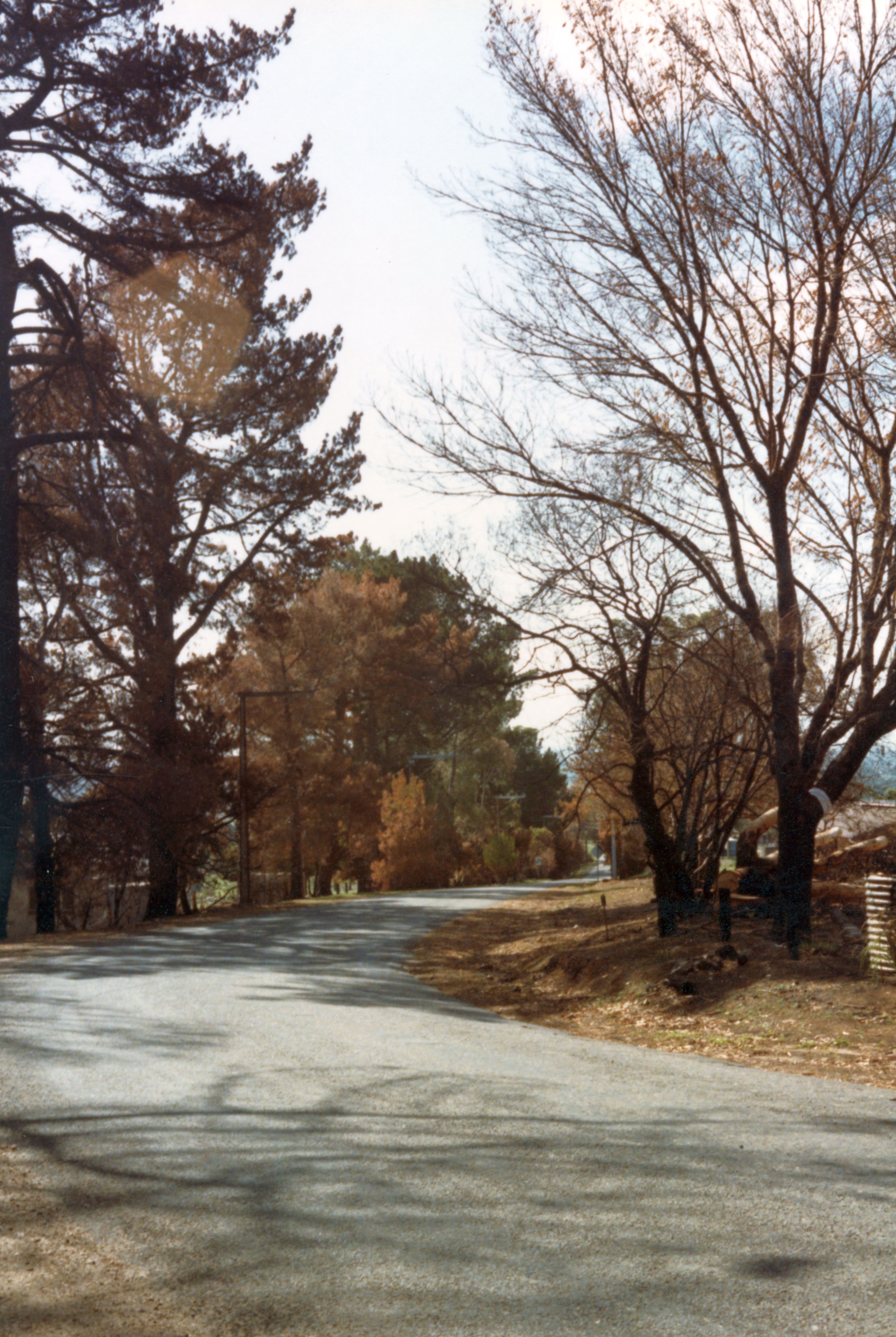
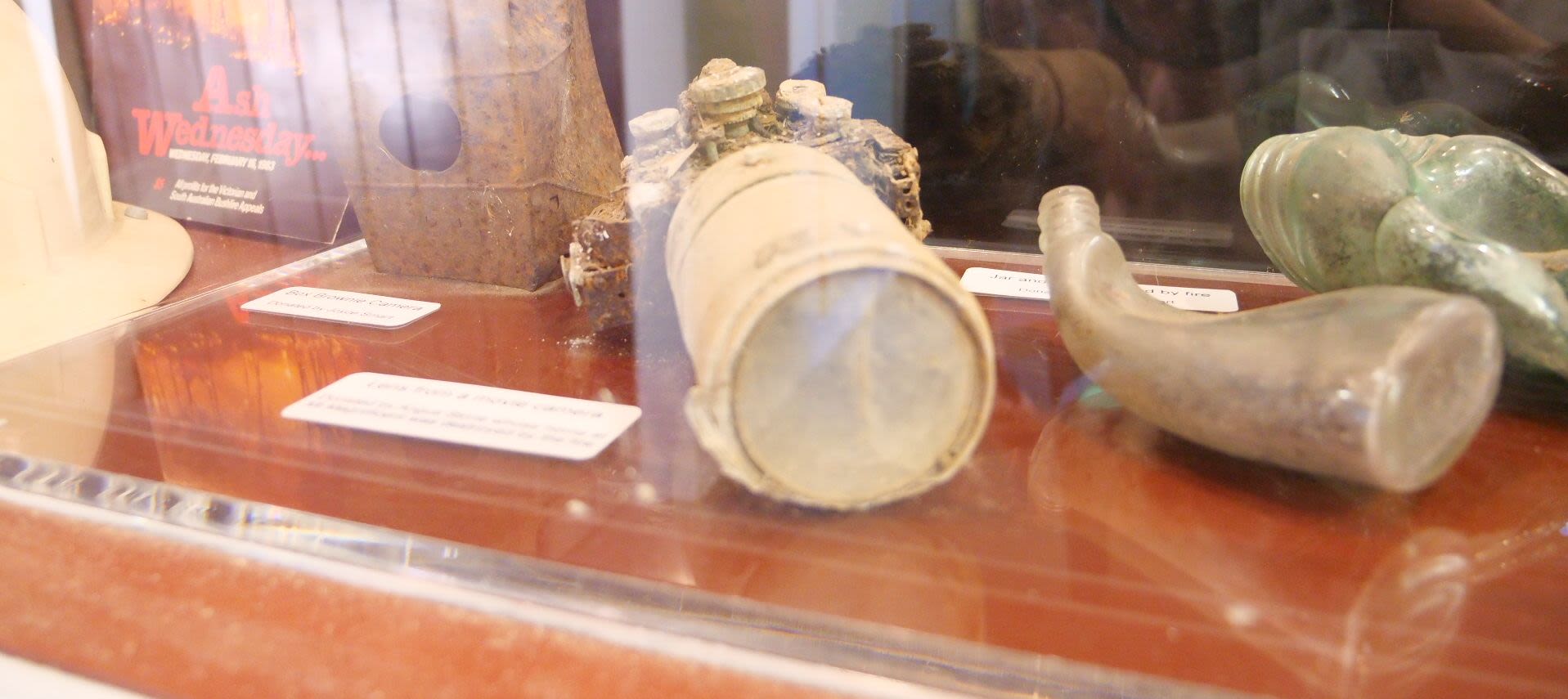
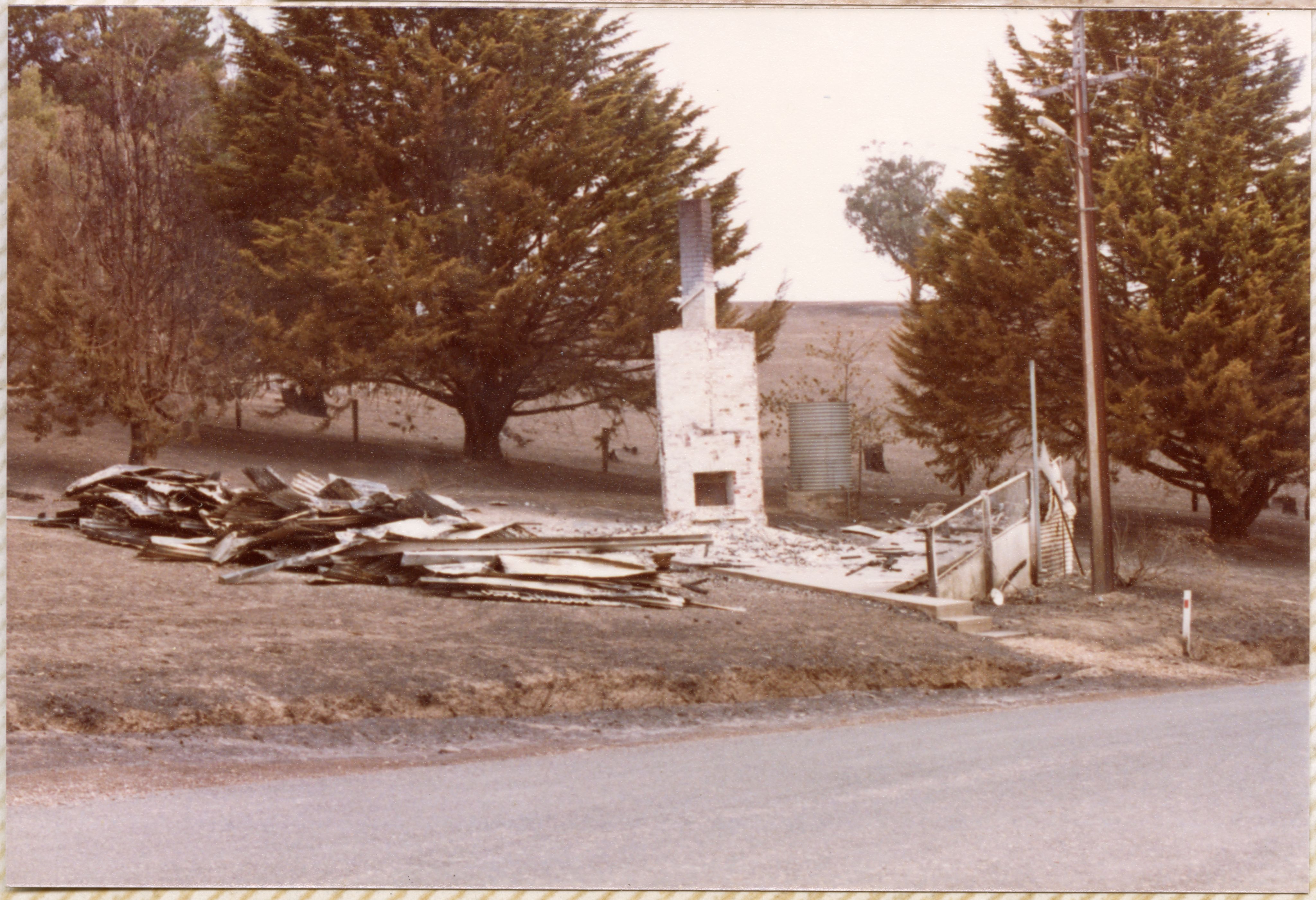
The fire made it to Lindsay’s property and he lost sheds and outer buildings and then, just as the fire approached his house, it began to rain.
Lindsay Gibson at the Prospect Hill Historical Museum, holding his CFS helmet, 2023. Lindsay served in the CFS for over 40 years. Photo from the History Trust of South Australia.
Lindsay Gibson at the Prospect Hill Historical Museum, holding his CFS helmet, 2023. Lindsay served in the CFS for over 40 years. Photo from the History Trust of South Australia.
Damages on the day would later be reported:
In South Australia the Adelaide Hills were worst affected. There were also fires in the South East, Eyre Peninsula, Mid-north, and McLaren Flat. Across the state over 200, 000 hectares were burnt, 383 houses were destroyed, and 28 lives were lost. It was a disaster on such a grand scale that for the first time in South Australia's history the State Government declared a State of Emergency. Ash Wednesday | SA History Hub
In all, financial damages were estimated at $204 million across South Australia. Federation and Meteorology, Australian Meteorology through the 20th Century, images for page 1612 (unimelb.edu.au)
The community would later hold a service for their town on the public tennis courts as a way for people to collectively grieve.
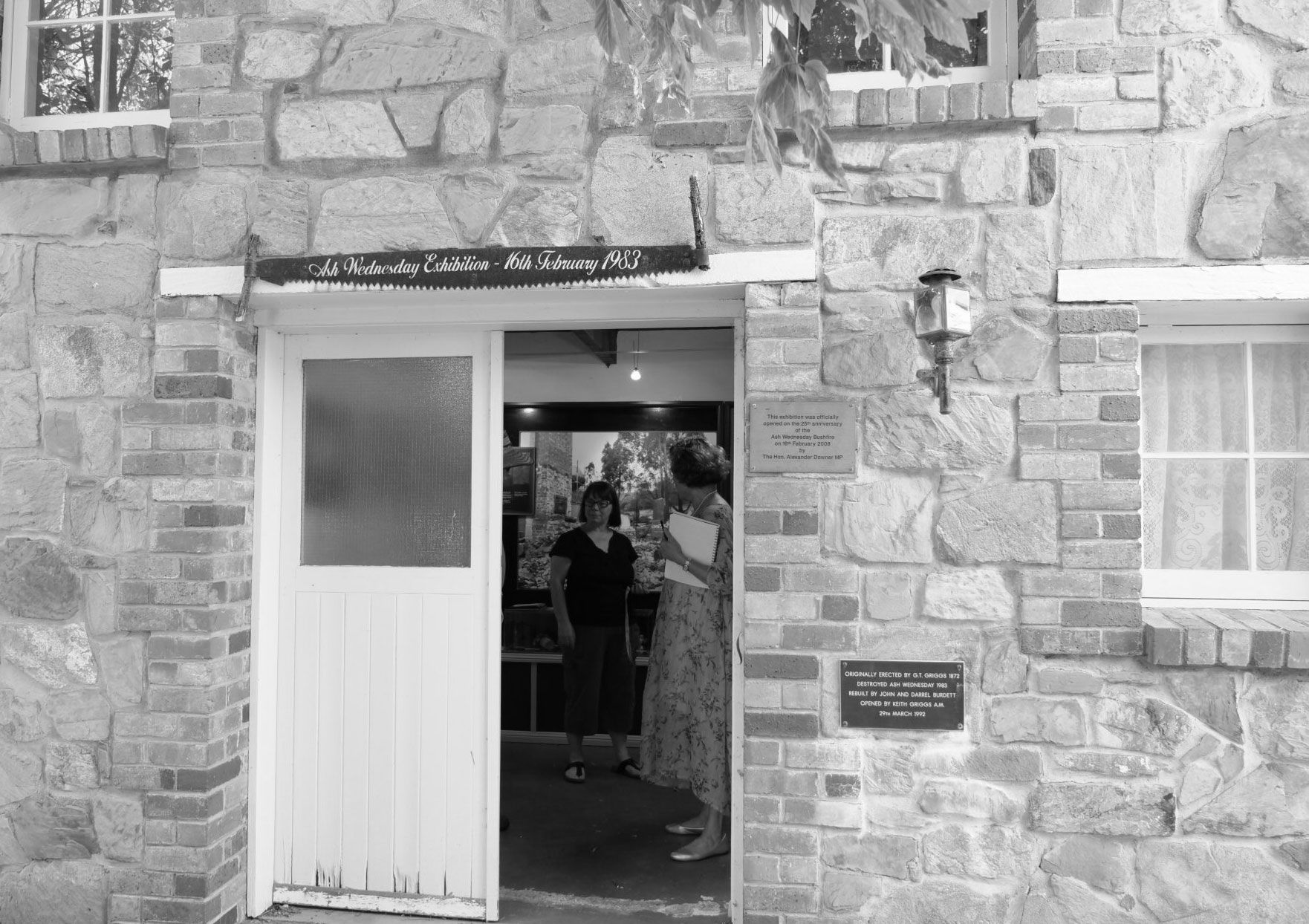
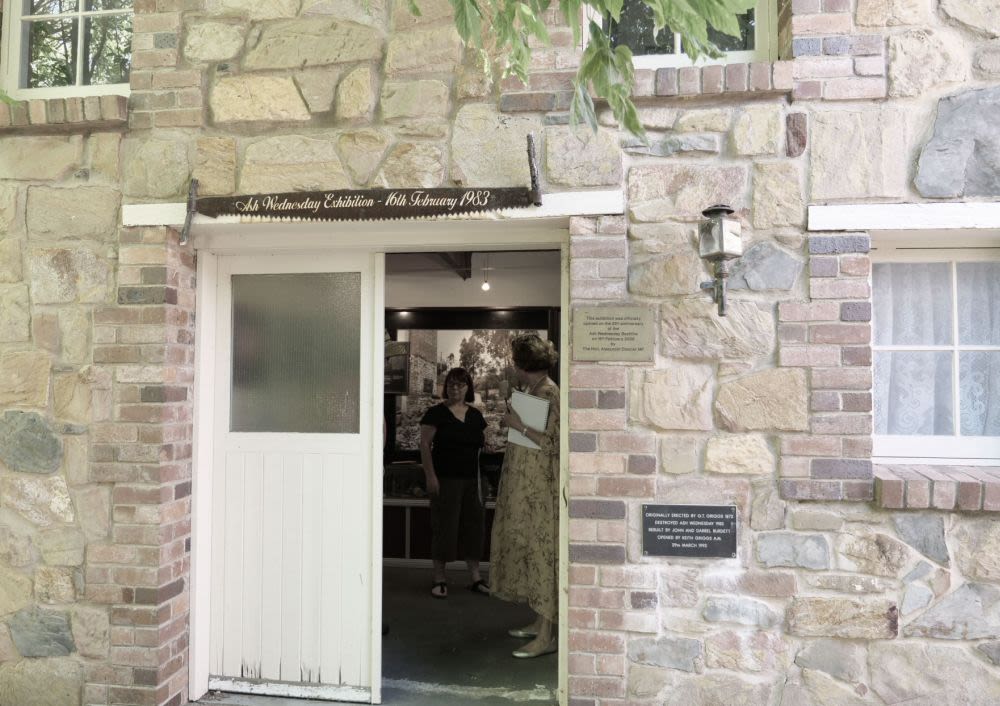
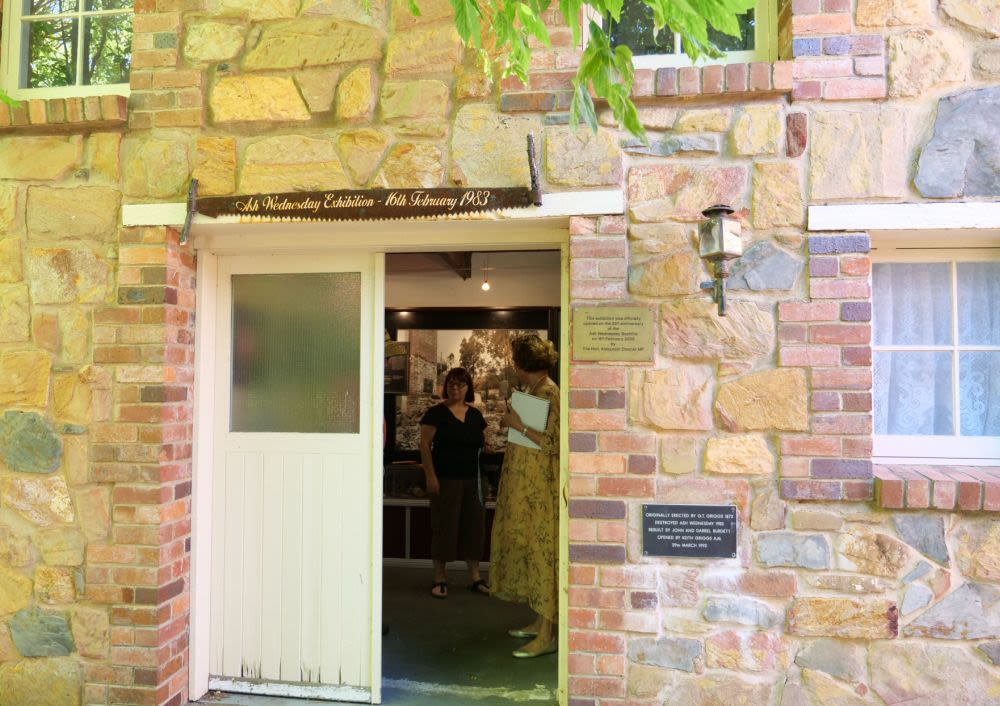
Forty years later
Prospect Hill is a small town, population 158 (2021 Census), and it is quiet. The main road sees little traffic; the occasional digger, four wheel drives and little else.
Prospect Hill in 2023 is green, the trees are mature, the Museum is a wonderful mix of Mr Griggs personal archive, a classroom set for students and a reminder of the dangers of fire. You can still see the scorch marks on the butcher block and the blacksmith’s shop. The old fire engine sits under a very productive fig tree and you can look down the hill that the fire once came up.
Today in Prospect Hill, and across the state, the technology is better, the local bore is now controlled by phone, fire danger warnings come via your mobile phone, and the state has better communication systems, newer firetrucks and waterbombing airplanes. We now know better than to stay and fight, we know to leave. We are more careful about the way we care for land. And the CFS remains a constant.
That said, there is still only a single fire engine to the serve the local Prospect Hill community and surrounds, and it’s down at Blackfellows Creek.
Onkaparinga Woollen Mill 2019
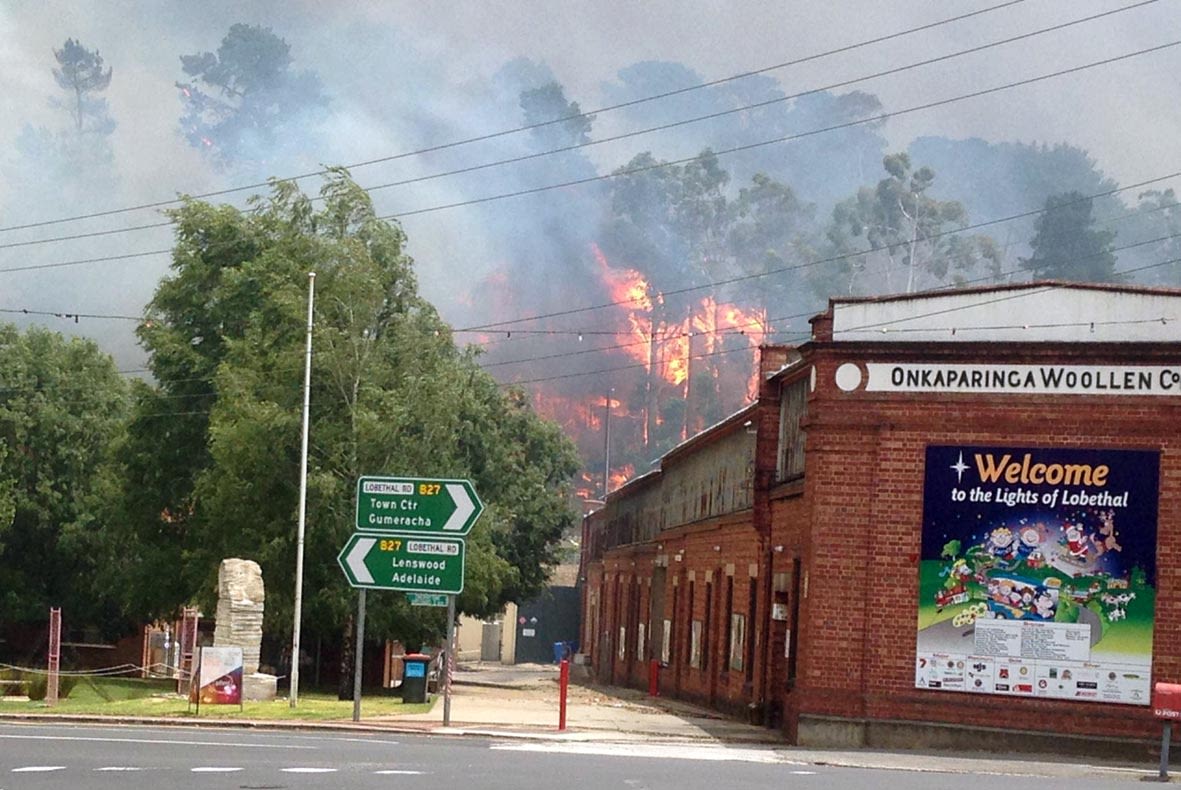
On 20 December 2019 a large pine tree fell on high voltage conductors, the conductors came into contact with a wire fence and the ground. The fire that started came to be the called Cudlee Creek Fire and would cause:
The 23,000-hectare blaze, which destroyed 98 homes and damaged hundreds of other buildings and vehicles, also claimed one life with the body of a man found in his burnt-out home in the small town of Charleston. – Australian Associated Press 23:58 10 March 2021, updated 01:27 11 March 2021
The historic Onkaparinga Woollen Mill complex after the fires in 2019. Photo courtesy Fabrik Arts + Heritage (Adelaide Hills Council).
The historic Onkaparinga Woollen Mill complex after the fires in 2019. Photo courtesy Fabrik Arts + Heritage (Adelaide Hills Council).
One of the towns affected was Lobethal, another Adelaide Hills community, and one time centre of wool processing.
Melinda Rankin is the Director of Fabrik Arts & Heritage, Lobethal. Fabrik’s home then, and now, is the Onkaparinga Woollen Mill, the largest of the former wool processing buildings. After fires raged through the Hills, Fabrik opened its exhibition space to the community as a place of respite.
The Mill was a place where small groups of people, including children, could rest, do crafts, and most importantly share their stories. When we asked Melinda what her community needed, she said ‘they needed to tell the story’.
'Picking up the Pieces' by Pauline Cockrill from the Regenerate exhibition held at Fabrik in Lobethal 11-20 December 2020. The installation took around four hours to construct from the pieces left behind from the Cudlee Creek Bushfire on the artist's property that had been gathered over the previous year. Photo courtesy Pauline Cockrill.
'Picking up the Pieces' by Pauline Cockrill from the Regenerate exhibition held at Fabrik in Lobethal 11-20 December 2020. The installation took around four hours to construct from the pieces left behind from the Cudlee Creek Bushfire on the artist's property that had been gathered over the previous year. Photo courtesy Pauline Cockrill.
And so they’re not just about being a bushfire victim, but they’re actually a creative individual human being that can immerse in something and make something new. – Melinda Rankin
At Lobethal and Prospect Hill, communities see their museums as kinds of memory boxes, as necessary places. For not only preserving memories and objects, but for building individual and collective wellbeing.
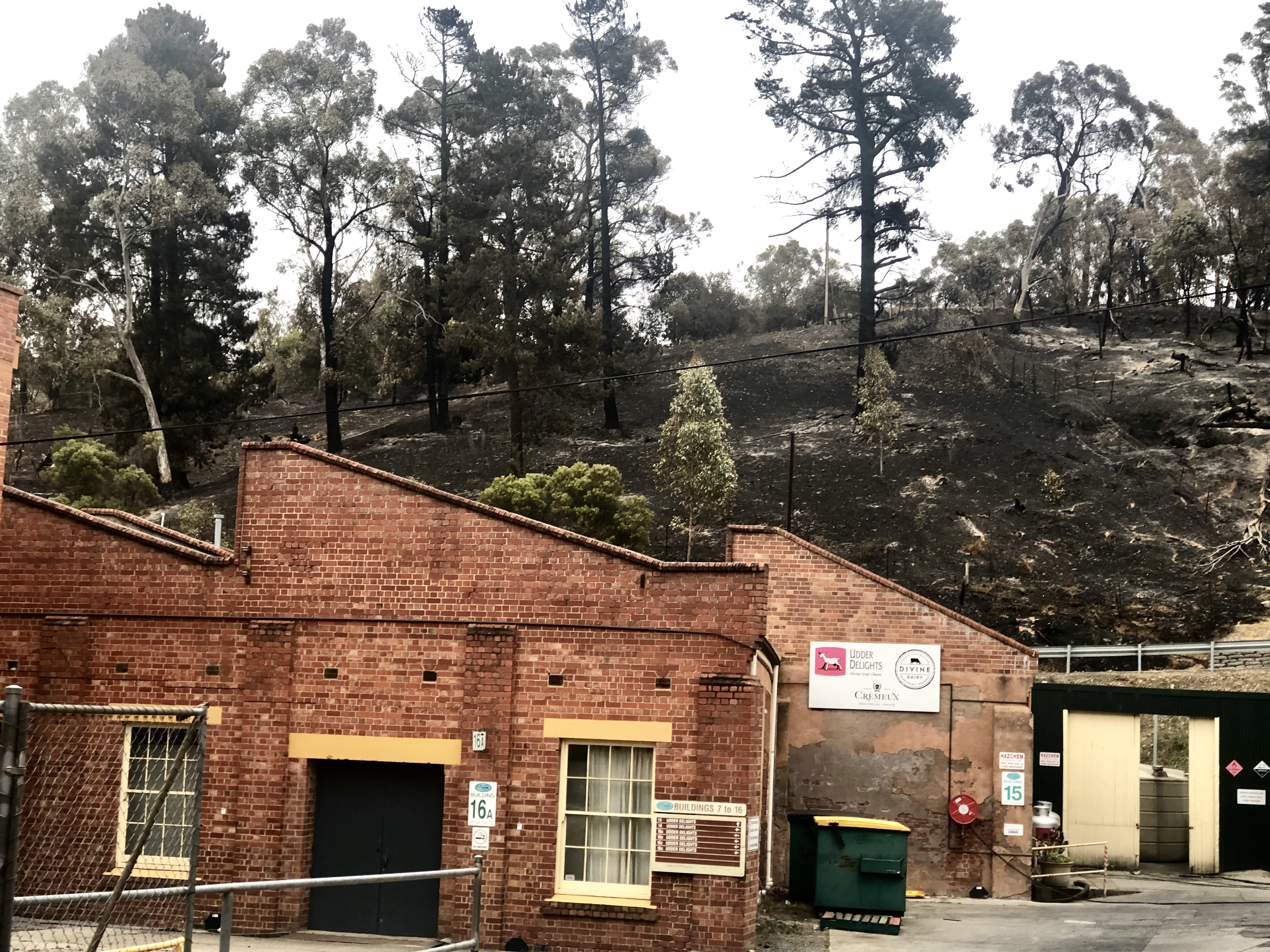
Betrayed by nature
For Adelaide, and the Adelaide Hills in particular, the 2019–20 fires, including Cudlee Creek bushfires, were devastating.
In part because we want to believe in the idea of a 'once in a generation' fires, even if that time, if it ever existed, has already passed. When the fires come in quicker succession, as human beings we struggle to keep up, and the trauma compounds as we collectively negotiate fear and loss.
When discussing the 2019-20 fires, I asked Melinda what the Lobethal community felt like in the aftermath.
She said some people expressed they felt ‘betrayed’ by nature and ‘lost their sense of safety’. She said some shared they had ‘stopped trusting the place’. The fire didn’t just burn thick bushland but, destroyed green vineyards and open paddocks. It threatened townships and industrial areas and was held back only by the efforts of firefighters.
When interviewed for Prospect Hill: Memories of a Burned Village, Blackfellows Creek resident Graeme Usher said of the 1983 fire:
The fire itself broke all existing fire behaviour knowledge that we knew at the time. We had never even imagined the intensity of it.
One of the most challenging aspects of climate change is that it requires us to imagine the already unimaginable somehow getting worse, more frequent, more dangerous, more destructive and more likely to happen where we live. Evidence of this is found in a study in 2020, which predicted that without change the number of fires will continue to expand into the future:
Insurance data showed 99% of homes destroyed or damaged last bushfire season were located on or within 500 metres of land declared as bushfire prone, and 74% were built before the introduction of the national bushfires construction standard.
Climate change risk analysis company XDI estimated there are more than 380,000 properties across Australia at high risk from natural hazards, the inquiry was told.
In part our imaginations fail us because we have an agreed upon notion of catastrophic fire frequency. We prefer to imagine these fires in terms of ‘once in a generation’, ‘once in a lifetime’, about every 25-30 years or at a stretch 50 years. Sadly, this is likely no longer the case.
Better bedfellows
Melinda Rankin and Fabrik have delivered models where art, history and storytelling come together to service a community in terms of both care and resilience. Is it possible to include science into this heady mix? For instance, in the case of fire, traditional cool burning as practiced for millennia by the First Nations peoples.
Is it possible to harness the urgency of the scientific climate change narrative and traditional land practices and use them to consider the role the History Trust and museums play in terms of how we care for history and community in times of disaster?
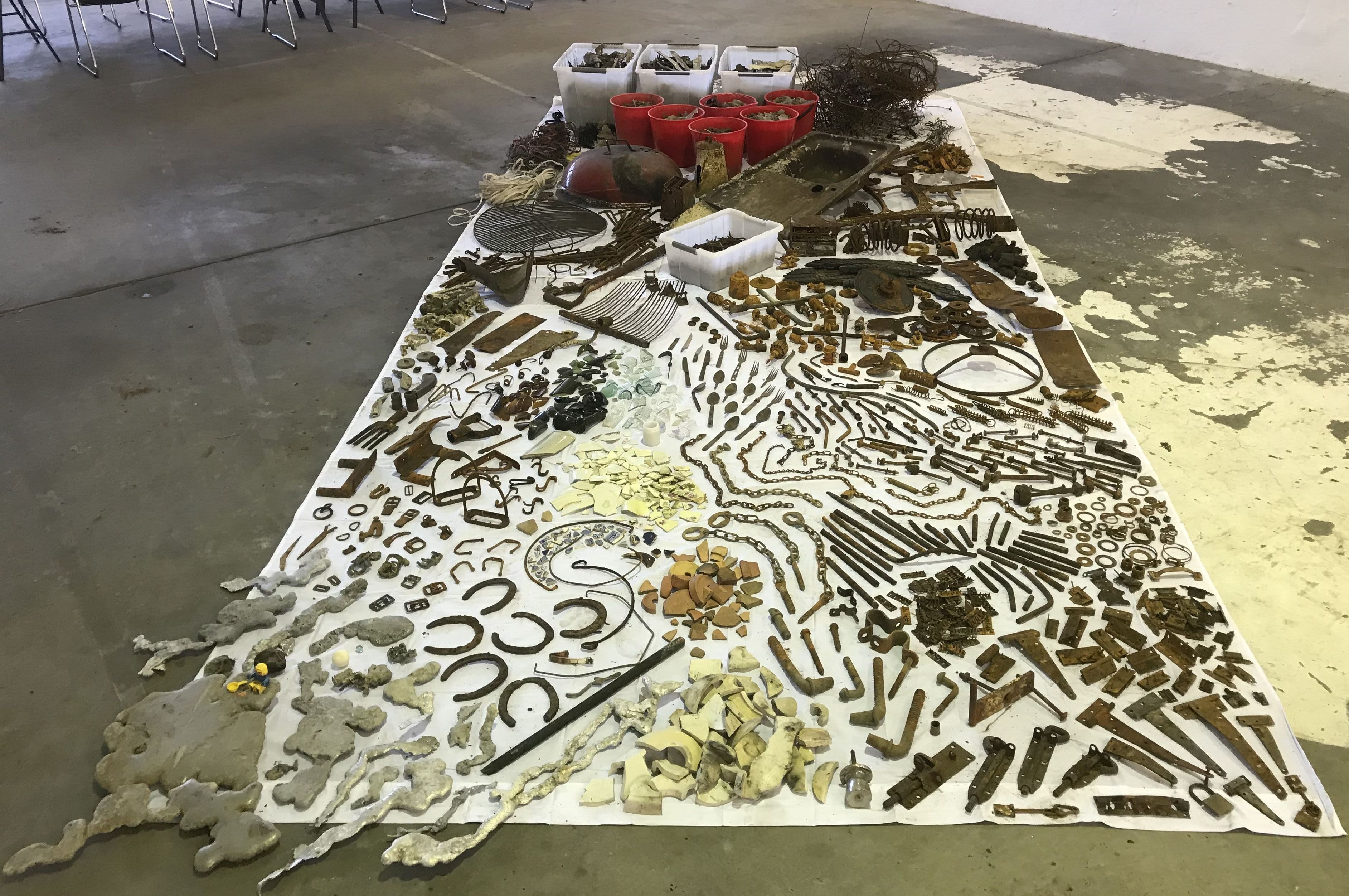
Continuity of Care
In Prospect Hill: Memories of a Burned Village the authors write:
… editing these stories, we were particularly struck by the way in which the community chose to look backwards in order to move forwards. This was not done apprehensively, but in a way that respected the past and the events that shaped it. In a sense, the community took solace in its history and used its social identity as a rallying point to rebuild their lives.
Museums across the state offer their communities places to reflect and remember, they offer new audiences and community members a way into the community through its history and its memories.
As such, museums help communities build resilience. The care and upkeep of collections is both expensive and labour intensive, and can be stressful for community and volunteer based groups, without the added pressure of a natural disaster.
As we have seen this summer museums are under increasing pressure due to natural disaster. As the History Trust looks to the future we embrace the need to work with our network of museums to imagine and support all of our futures – or we will look backwards in order to move forwards.
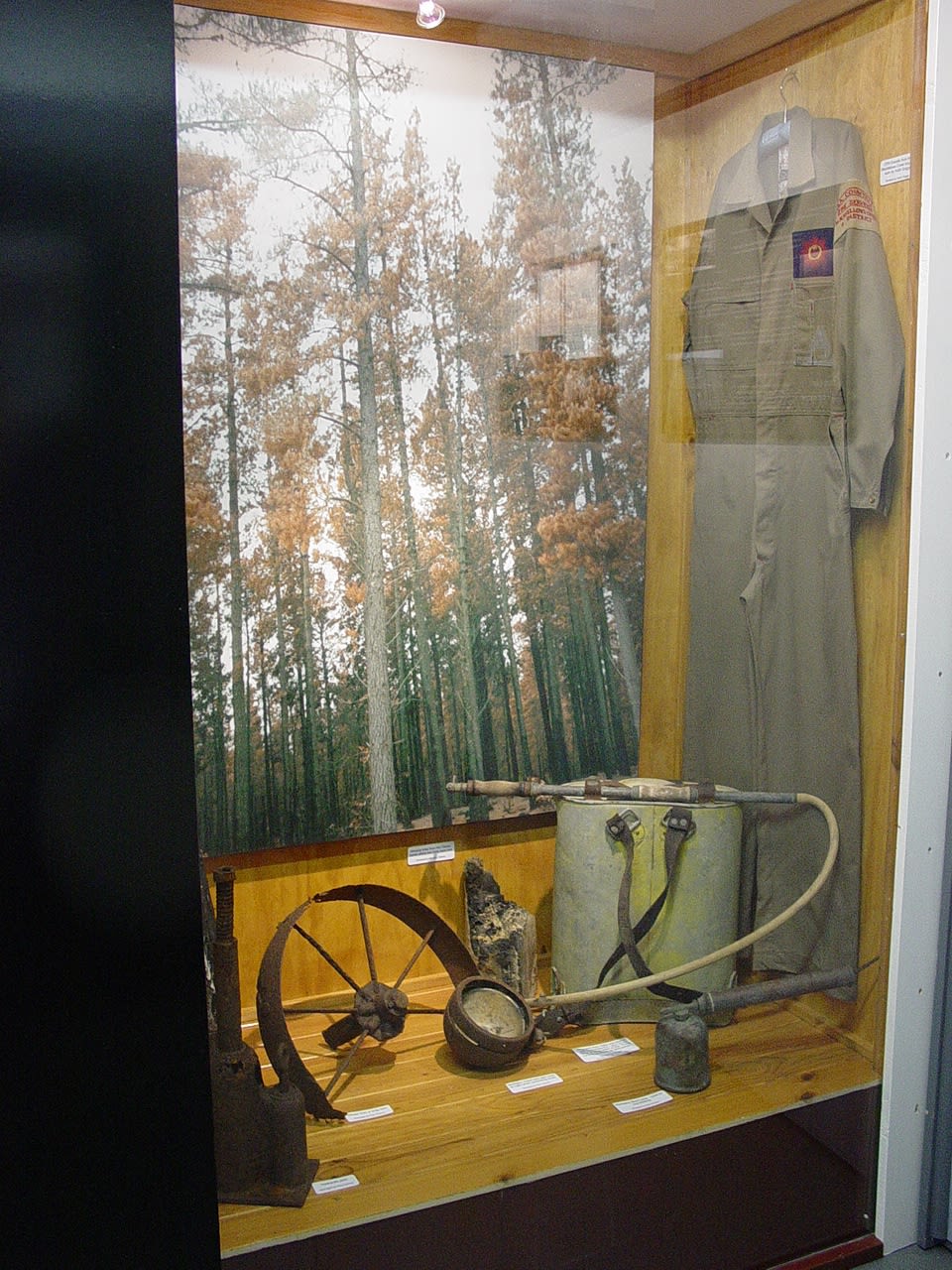
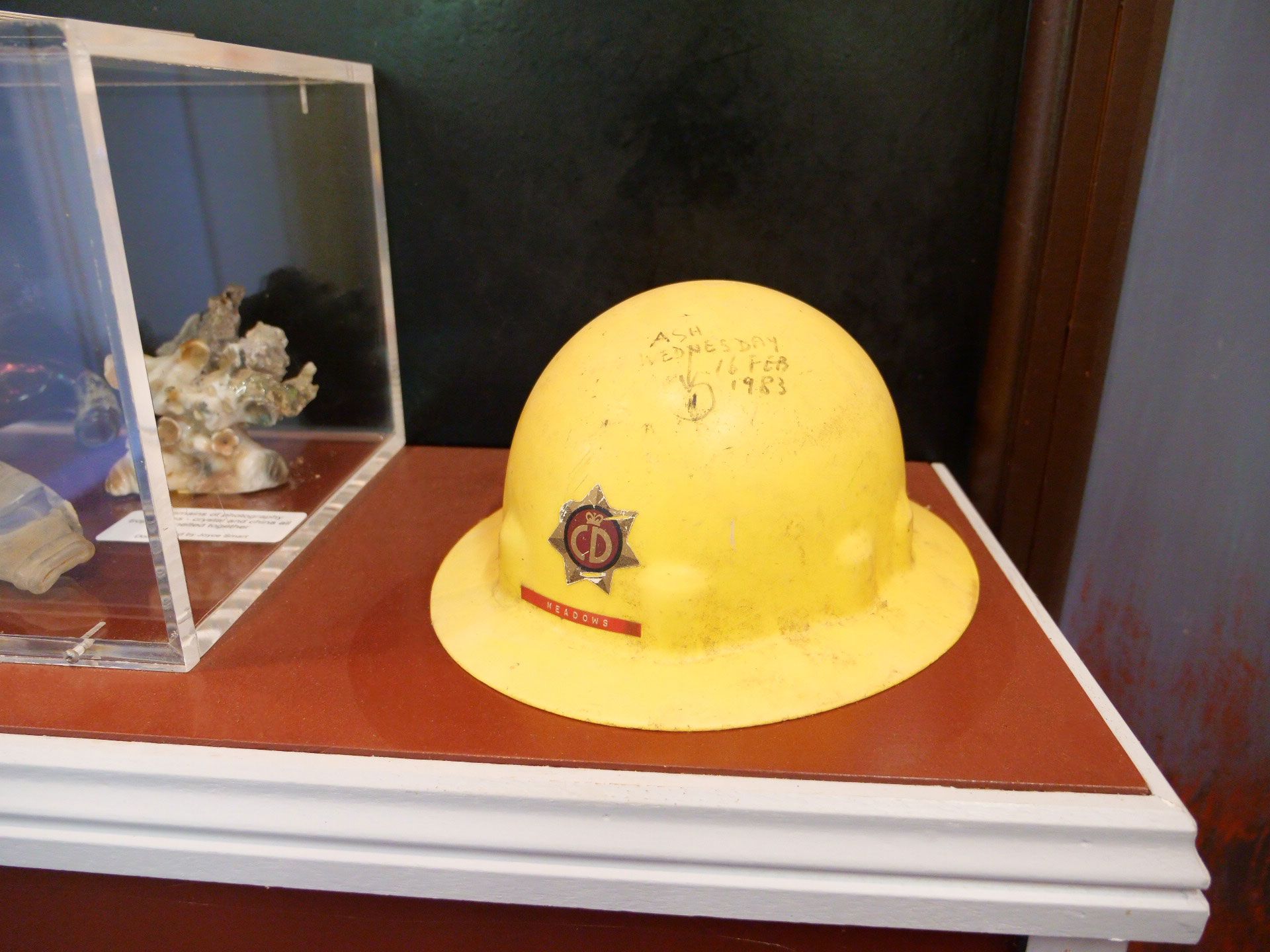
Lindsay shows Laura where the fires burned through Prospect Hill on 16 February 1983, Prospect Hill Historical Museum, 2023. Photo from the History Trust of South Australia.
Lindsay shows Laura where the fires burned through Prospect Hill on 16 February 1983, Prospect Hill Historical Museum, 2023. Photo from the History Trust of South Australia.
A fig tree grows through the old fire truck, 2023. Photo from the History Trust of South Australia.
A fig tree grows through the old fire truck, 2023. Photo from the History Trust of South Australia.
Display at the Prospect Hill Historical Museum, 2008. Photo from the History Trust of South Australia.
Display at the Prospect Hill Historical Museum, 2008. Photo from the History Trust of South Australia.
The charred butcher's block outside the Prospect Hill Historical Museum, 2023. Photo from the History Trust of South Australia.
The charred butcher's block outside the Prospect Hill Historical Museum, 2023. Photo from the History Trust of South Australia.
The Prospect Hill Historical Museum site after the Ash Wednesday fires of 16 February 1983. Photo from the Coad family album, Prospect Hill Historical Museum collection, courtesy of the Coad family.
The Prospect Hill Historical Museum site after the Ash Wednesday fires of 16 February 1983. Photo from the Coad family album, Prospect Hill Historical Museum collection, courtesy of the Coad family.
Panel from a quilt in the community centre now on the site of the former CWA Hall, Prospect Hill, 2023. Photo from the History Trust of South Australia.
Panel from a quilt in the community centre now on the site of the former CWA Hall, Prospect Hill, 2023. Photo from the History Trust of South Australia.
Julie Herraman, President at the Prospect Hill Historical Museum, takes Laura Kroetsch from the History Trust of South Australia on a tour of the site and Ash Wednesday exhibition, 2023. Photo from the History Trust of South Australia.
Julie Herraman, President at the Prospect Hill Historical Museum, takes Laura Kroetsch from the History Trust of South Australia on a tour of the site and Ash Wednesday exhibition, 2023. Photo from the History Trust of South Australia.
The site of the Prospect Hill Historical Museum following the fires in 1983. Photo from the Coad family album, Prospect Hill Historical Museum collection, courtesy of the Coad family.
The site of the Prospect Hill Historical Museum following the fires in 1983. Photo from the Coad family album, Prospect Hill Historical Museum collection, courtesy of the Coad family.
The rebuilt Prospect Hill Historical Museum, 2008. Photo from the History Trust of South Australia.
The rebuilt Prospect Hill Historical Museum, 2008. Photo from the History Trust of South Australia.
The following 7News clip contains footage of the Ash Wednesday fires in South Australia. It tells the story of Channel 7 journalist Murray Nichol who was firefighting in the Adelaide Hills as a CFS volunteer on the day. Nichol reported live from inside the fires and outside his own home as it was destroyed. Later in 1983 he won a Walkley Award for this coverage.
WARNING: The content is distressing.

